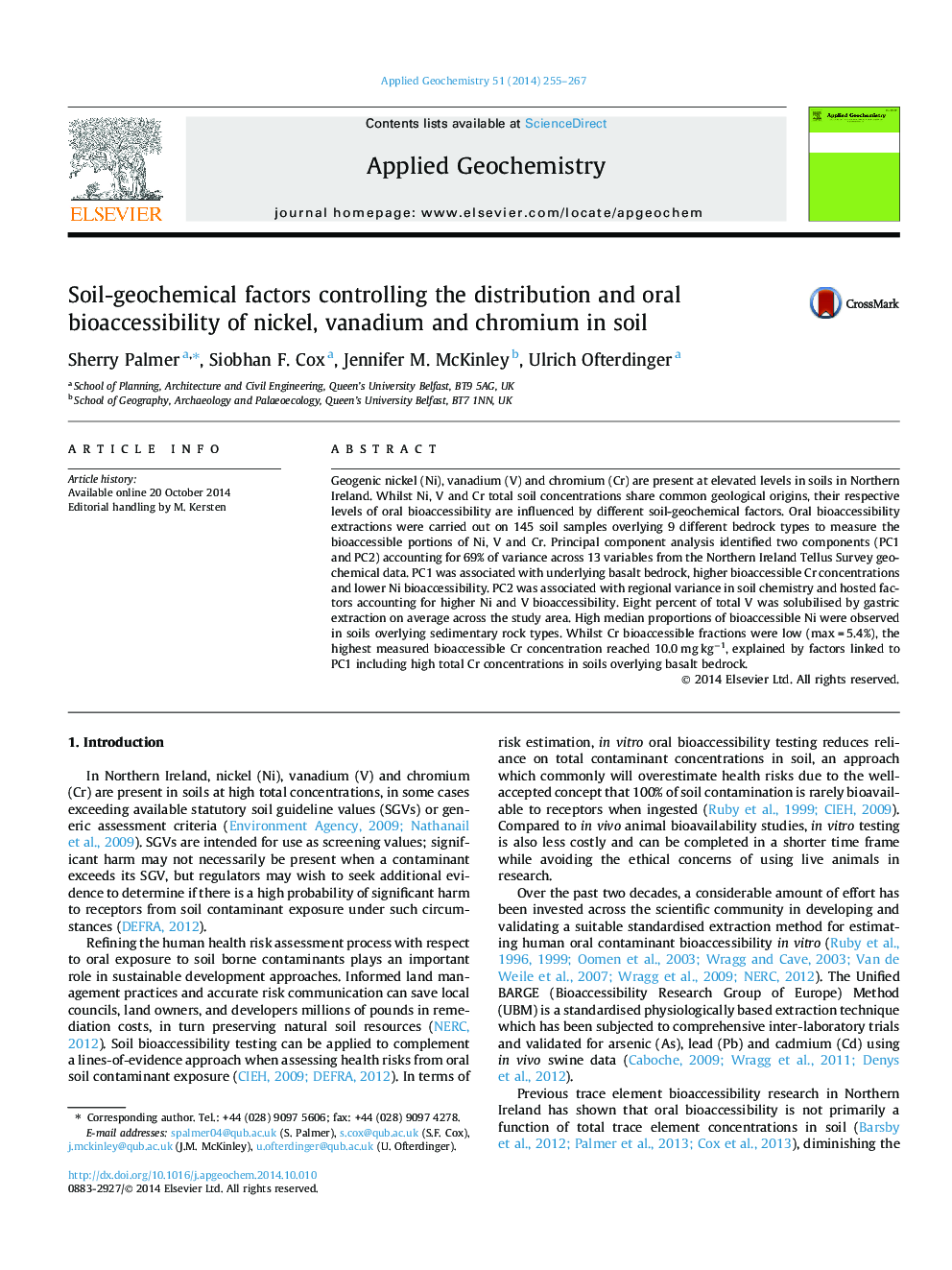| Article ID | Journal | Published Year | Pages | File Type |
|---|---|---|---|---|
| 6335114 | Applied Geochemistry | 2014 | 13 Pages |
â¢Two soil-geochemical factors were identified accounting for 69% of total variance.â¢Low chromium bioaccessible fractions were linked to basalt bedrock factors.â¢Bioaccessible nickel was associated with peat and calcareous soil components.â¢The median vanadium bioaccessible fraction was 7%; chromium 1% and nickel 15%.
Geogenic nickel (Ni), vanadium (V) and chromium (Cr) are present at elevated levels in soils in Northern Ireland. Whilst Ni, V and Cr total soil concentrations share common geological origins, their respective levels of oral bioaccessibility are influenced by different soil-geochemical factors. Oral bioaccessibility extractions were carried out on 145 soil samples overlying 9 different bedrock types to measure the bioaccessible portions of Ni, V and Cr. Principal component analysis identified two components (PC1 and PC2) accounting for 69% of variance across 13 variables from the Northern Ireland Tellus Survey geochemical data. PC1 was associated with underlying basalt bedrock, higher bioaccessible Cr concentrations and lower Ni bioaccessibility. PC2 was associated with regional variance in soil chemistry and hosted factors accounting for higher Ni and V bioaccessibility. Eight percent of total V was solubilised by gastric extraction on average across the study area. High median proportions of bioaccessible Ni were observed in soils overlying sedimentary rock types. Whilst Cr bioaccessible fractions were low (max = 5.4%), the highest measured bioaccessible Cr concentration reached 10.0 mg kgâ1, explained by factors linked to PC1 including high total Cr concentrations in soils overlying basalt bedrock.
